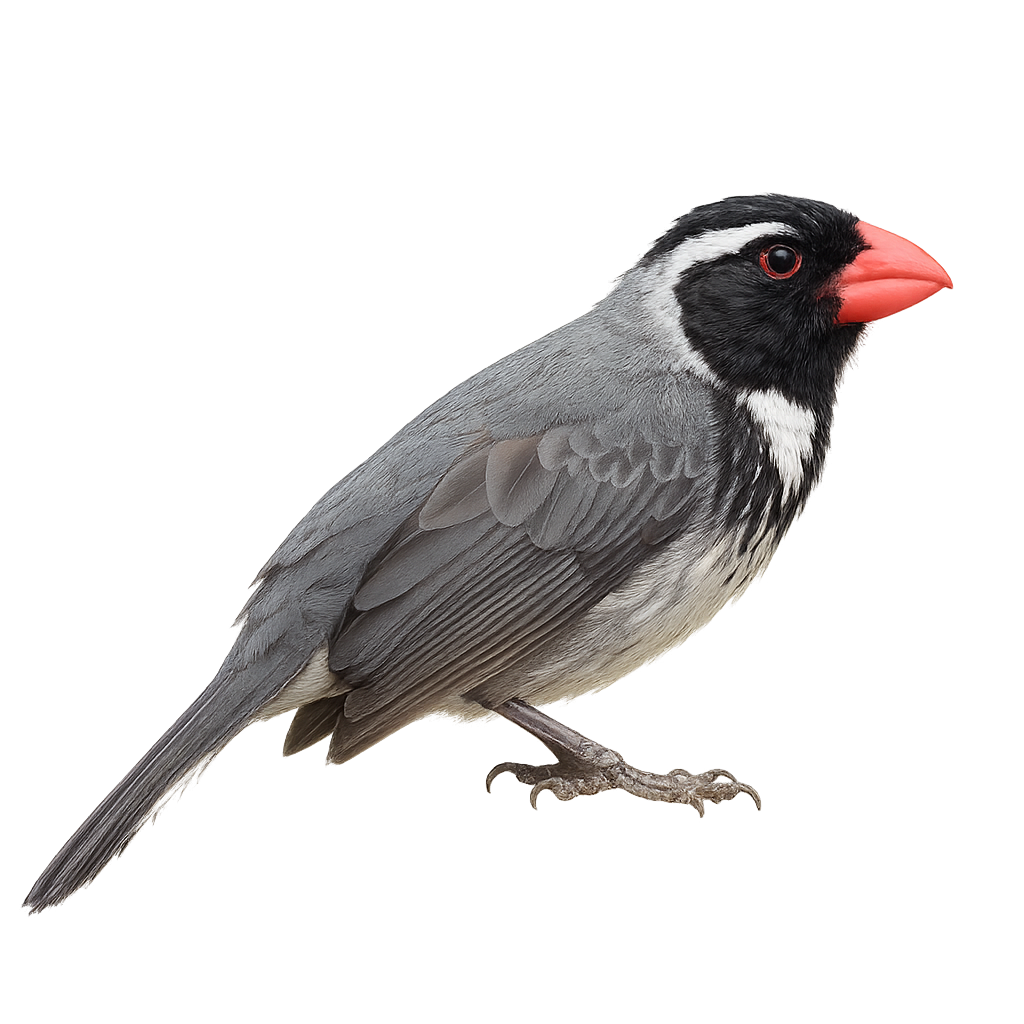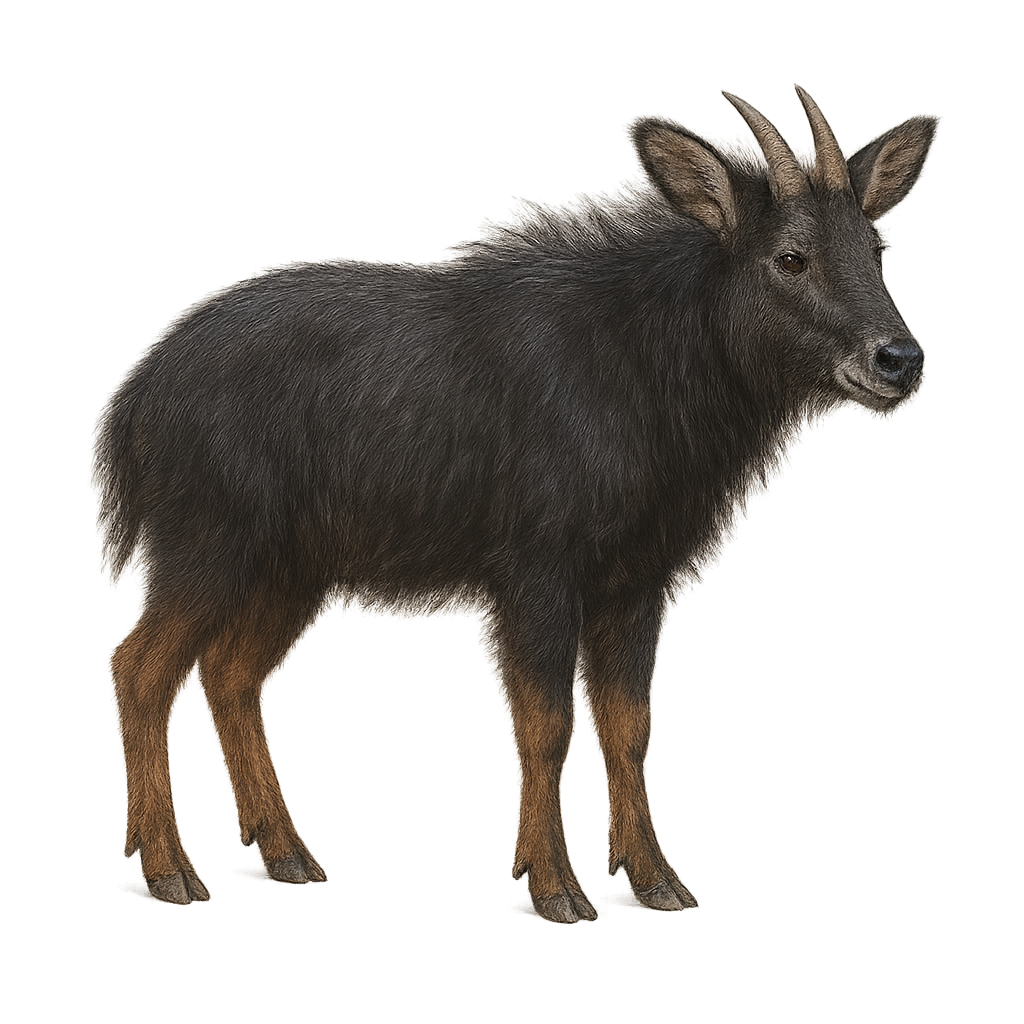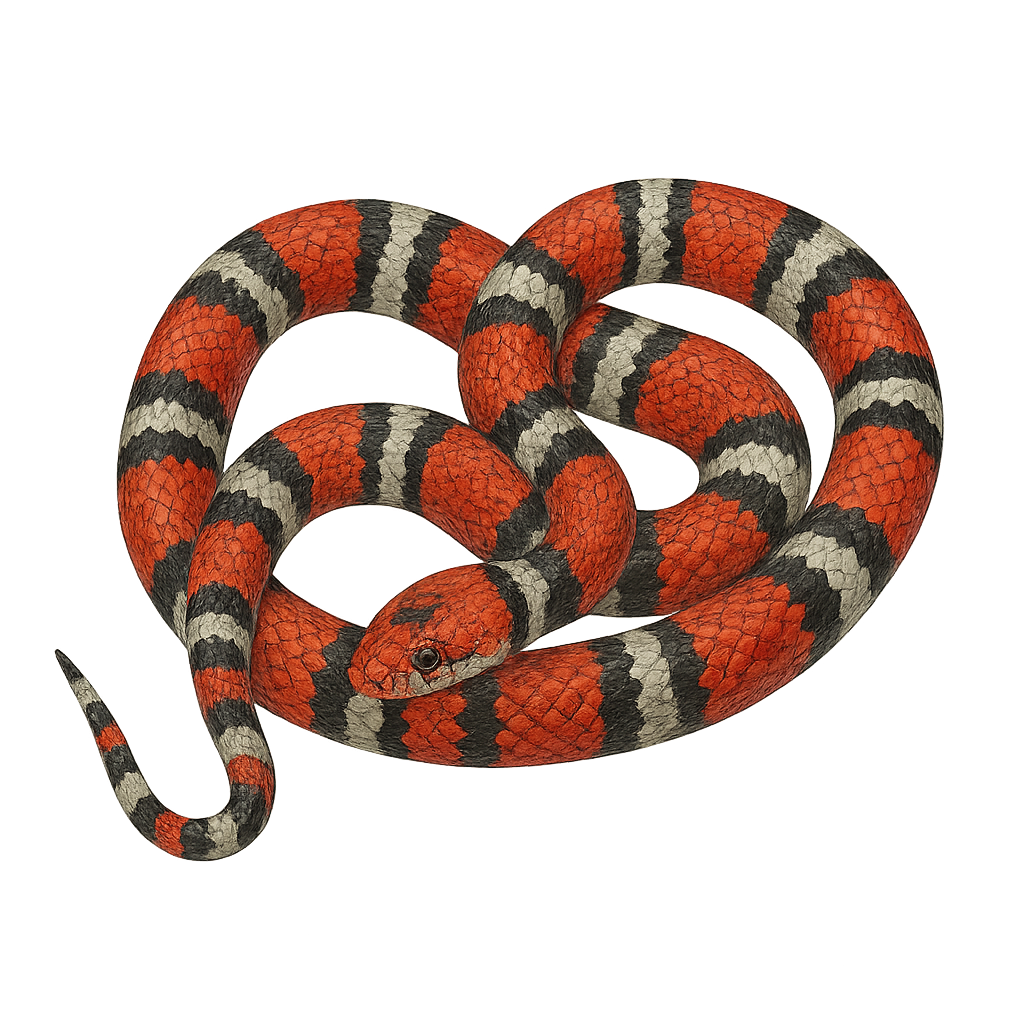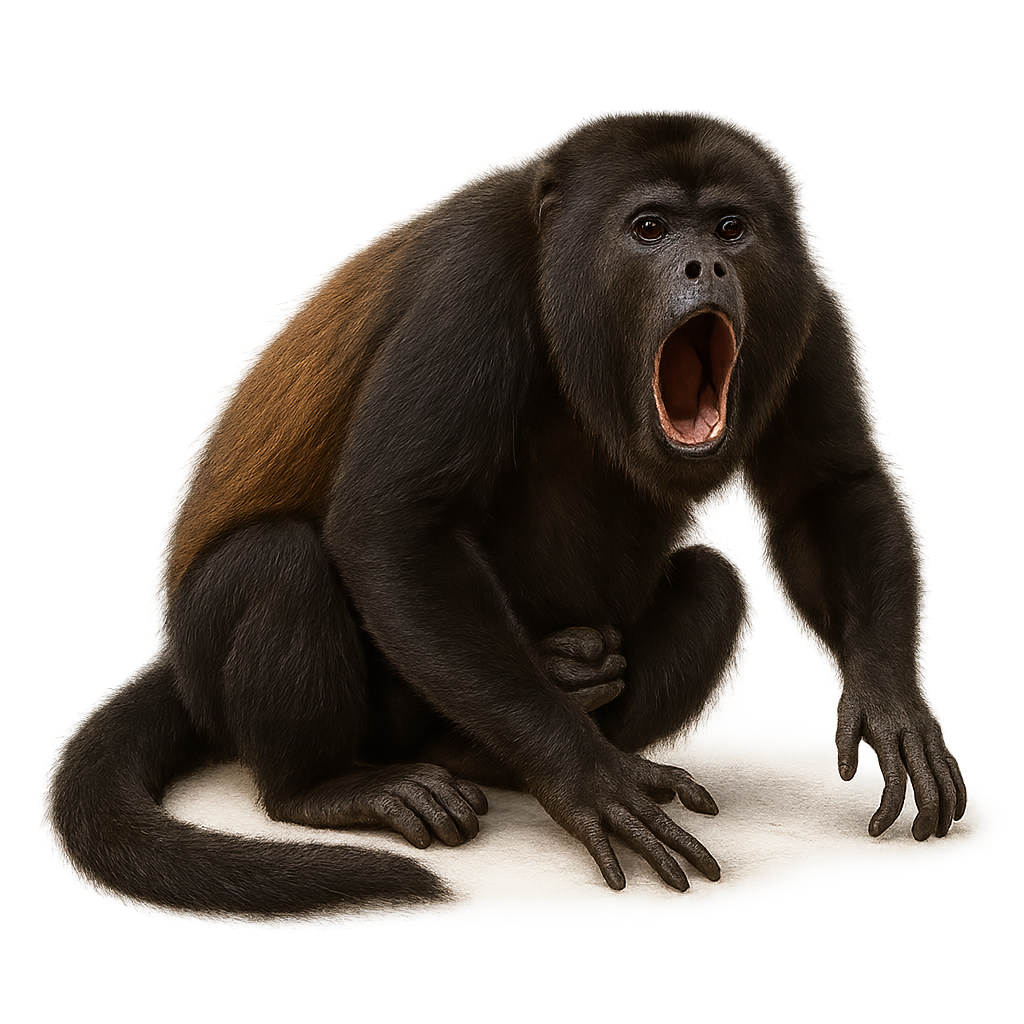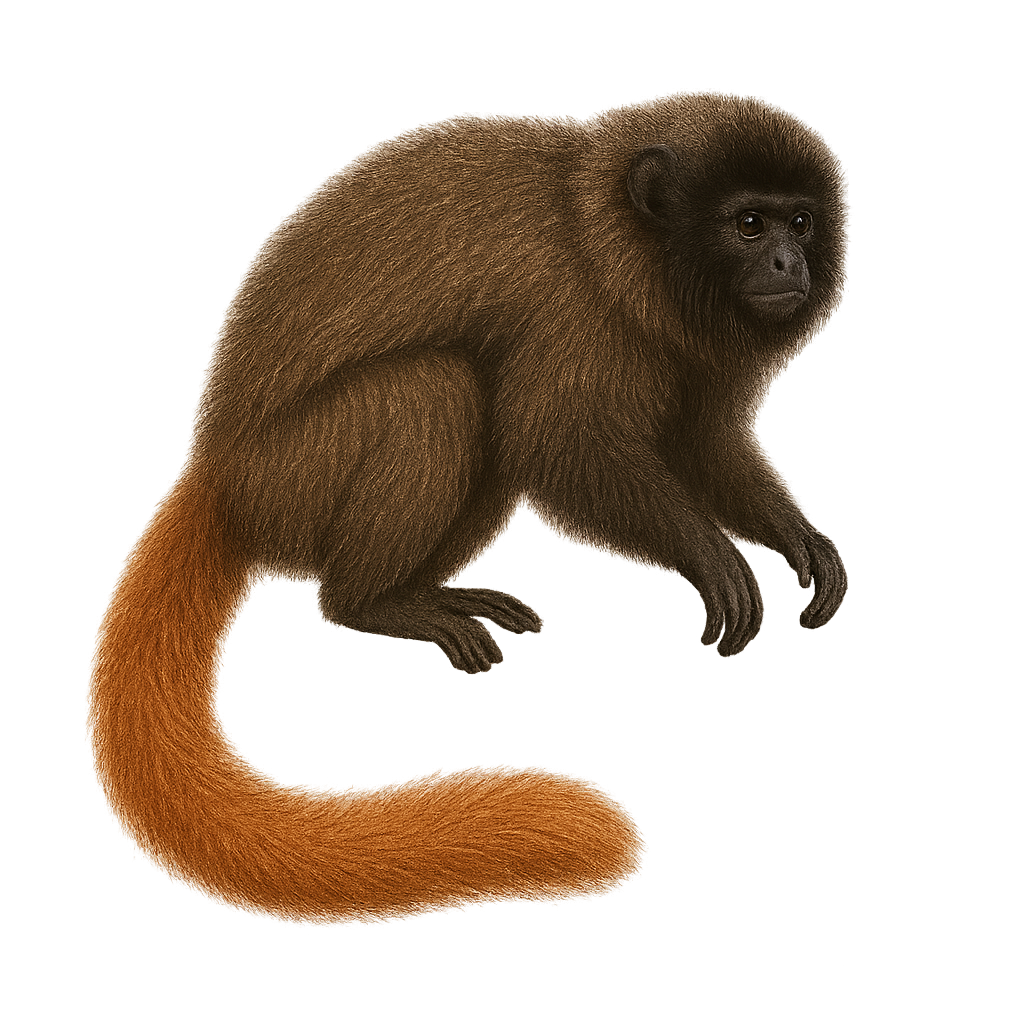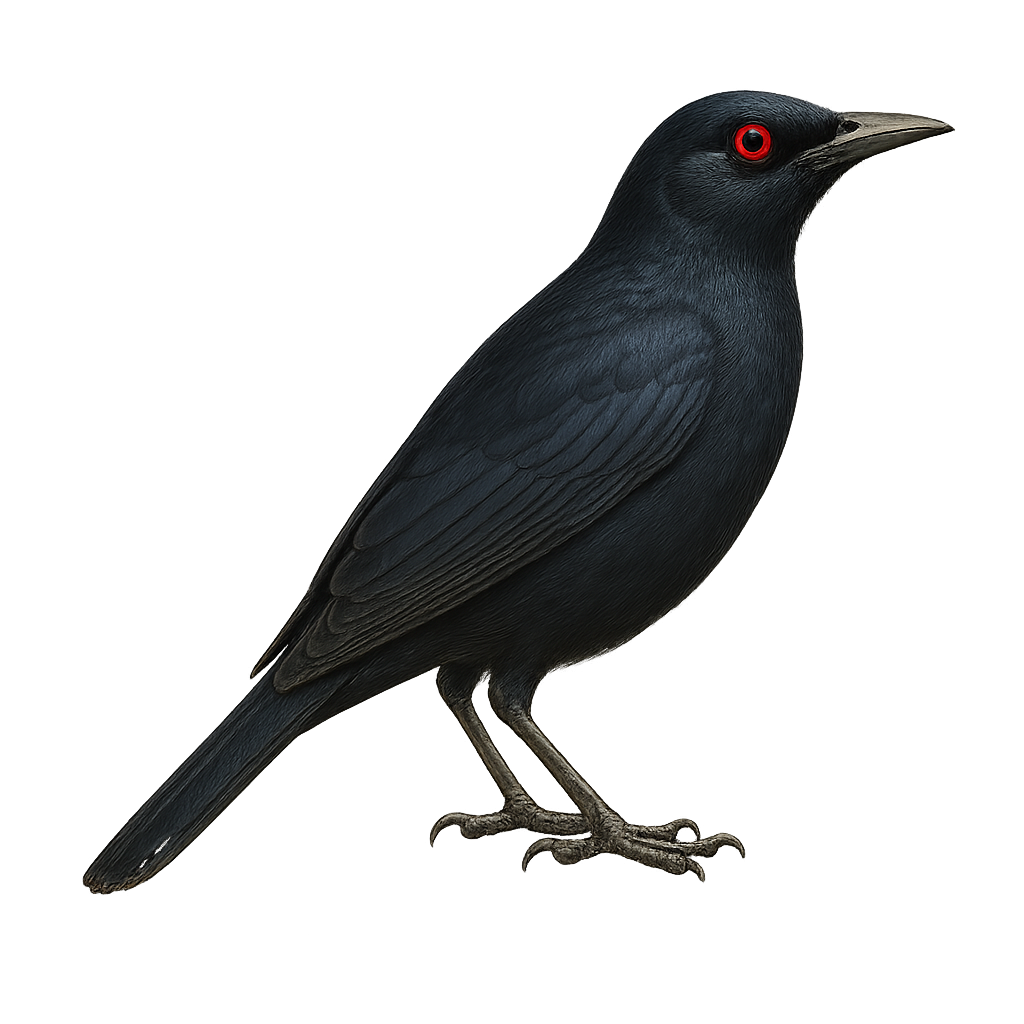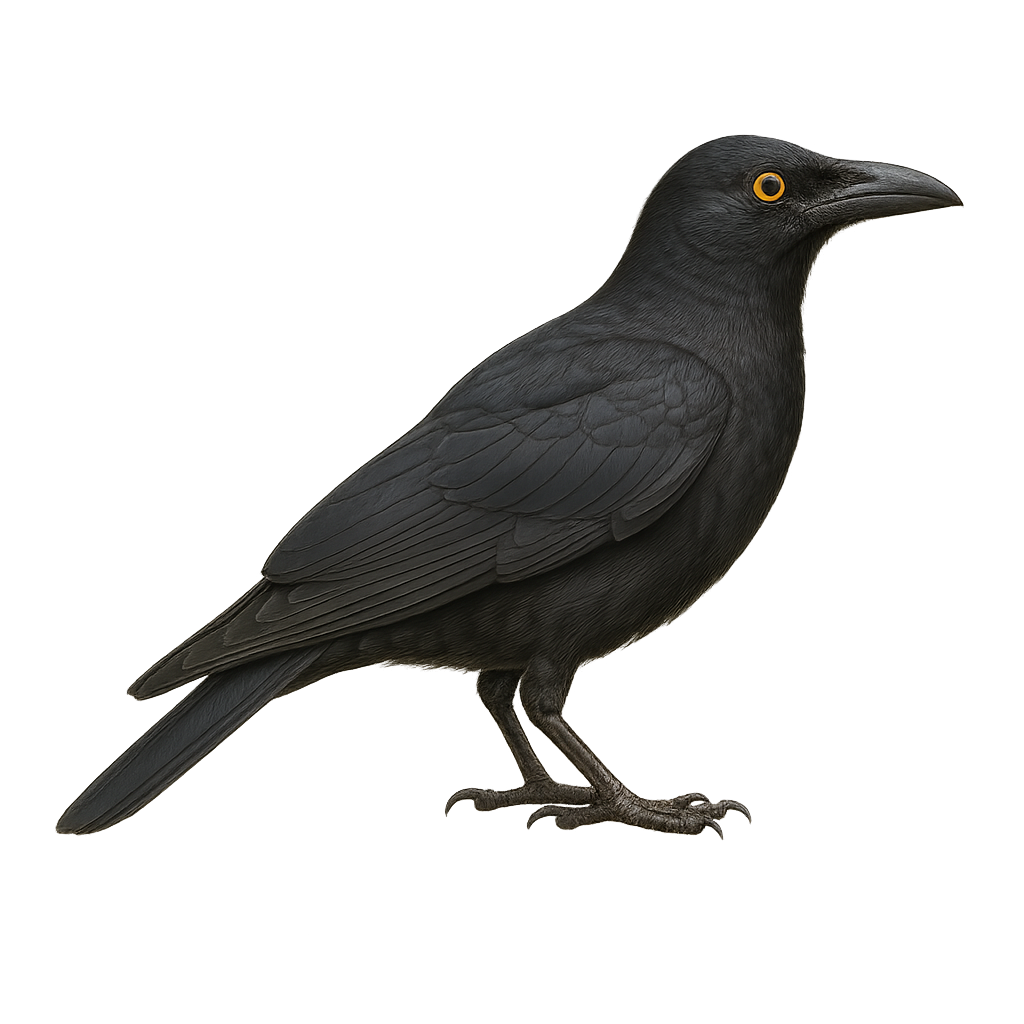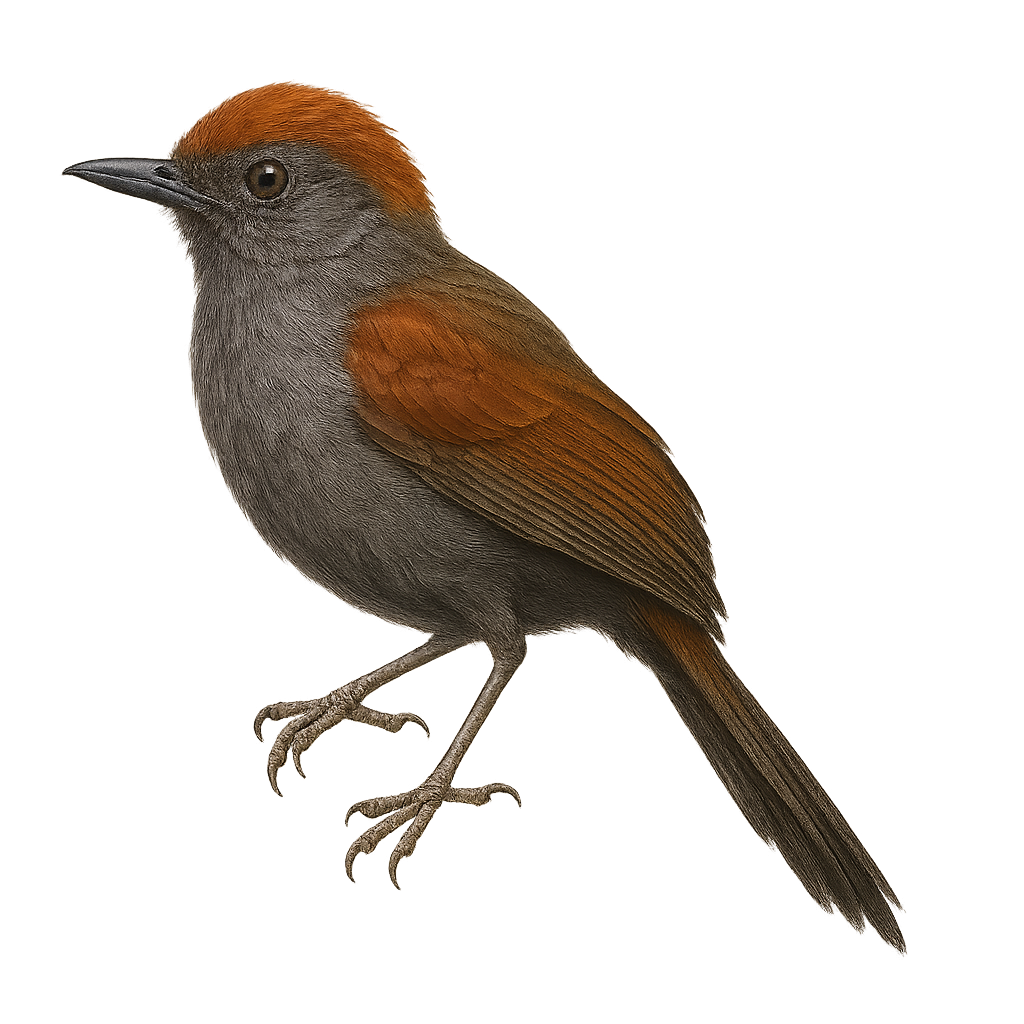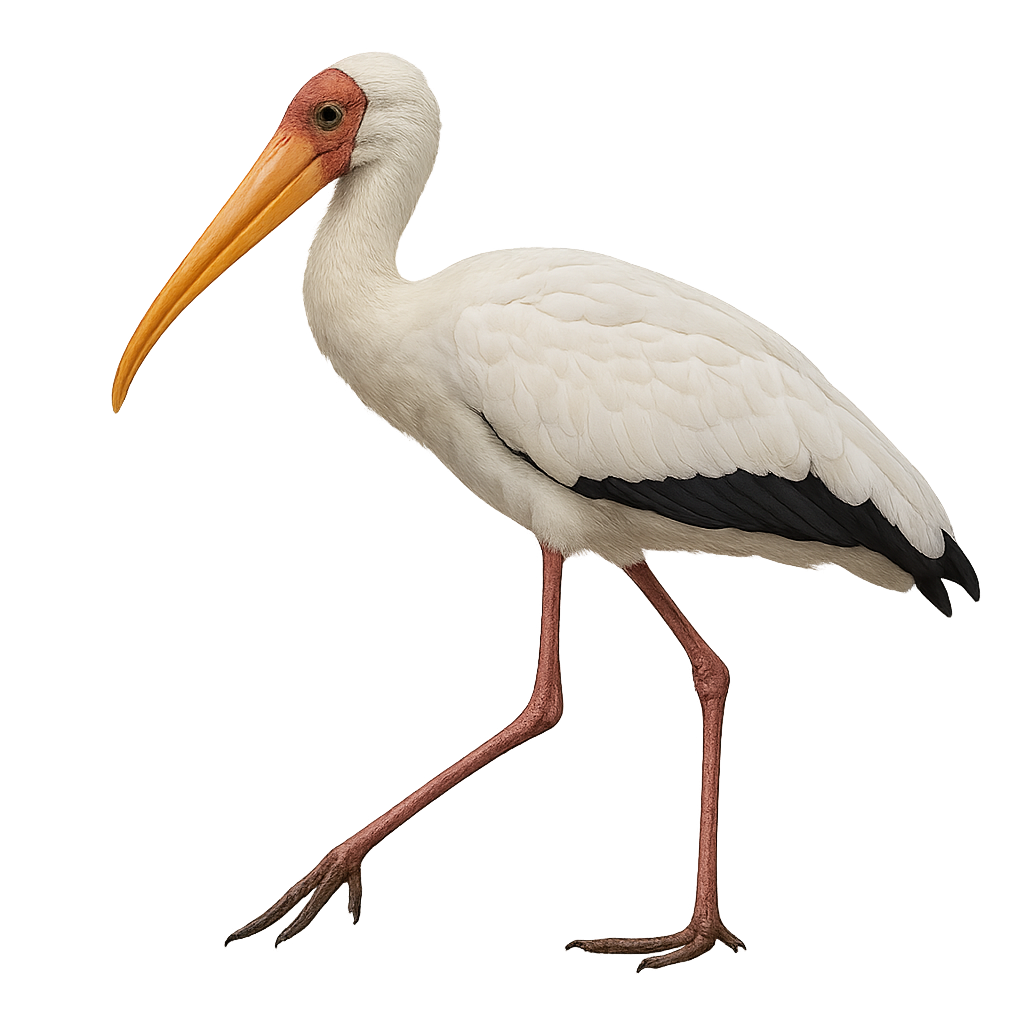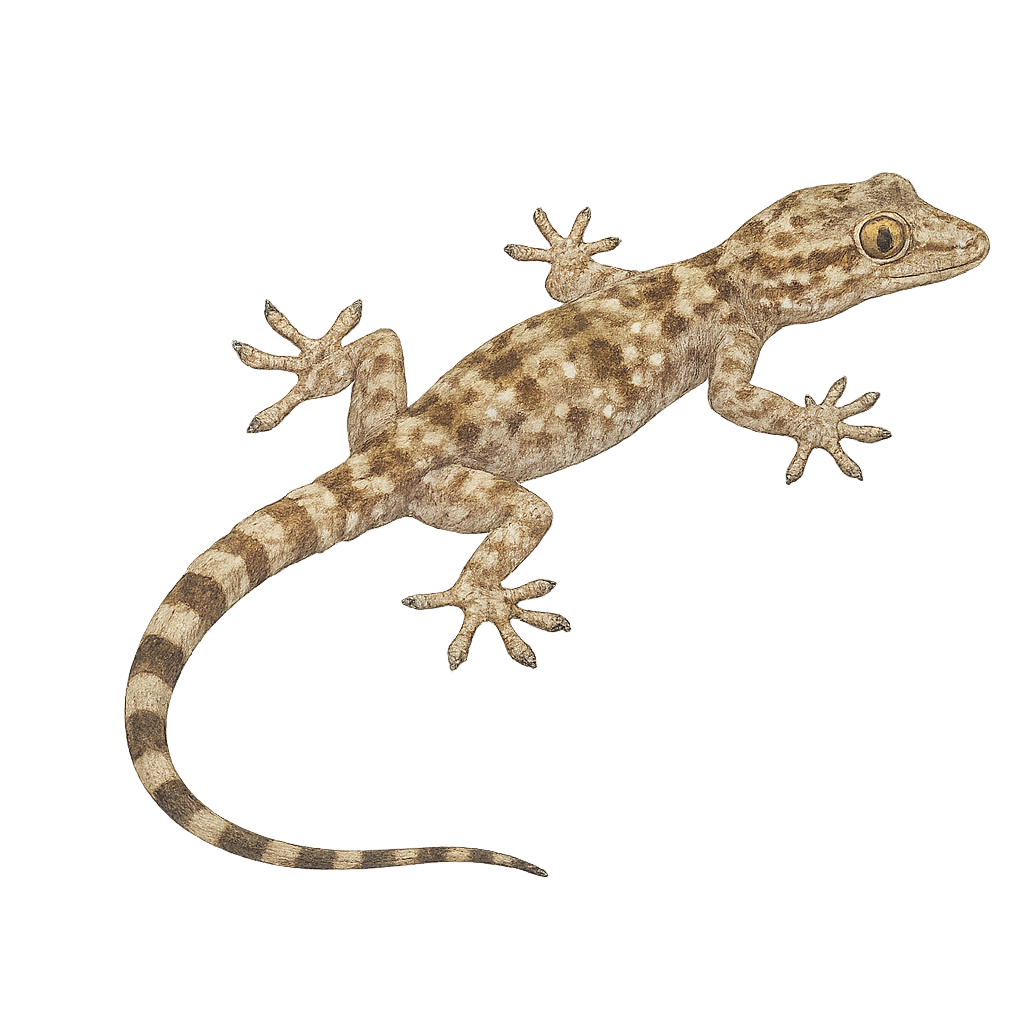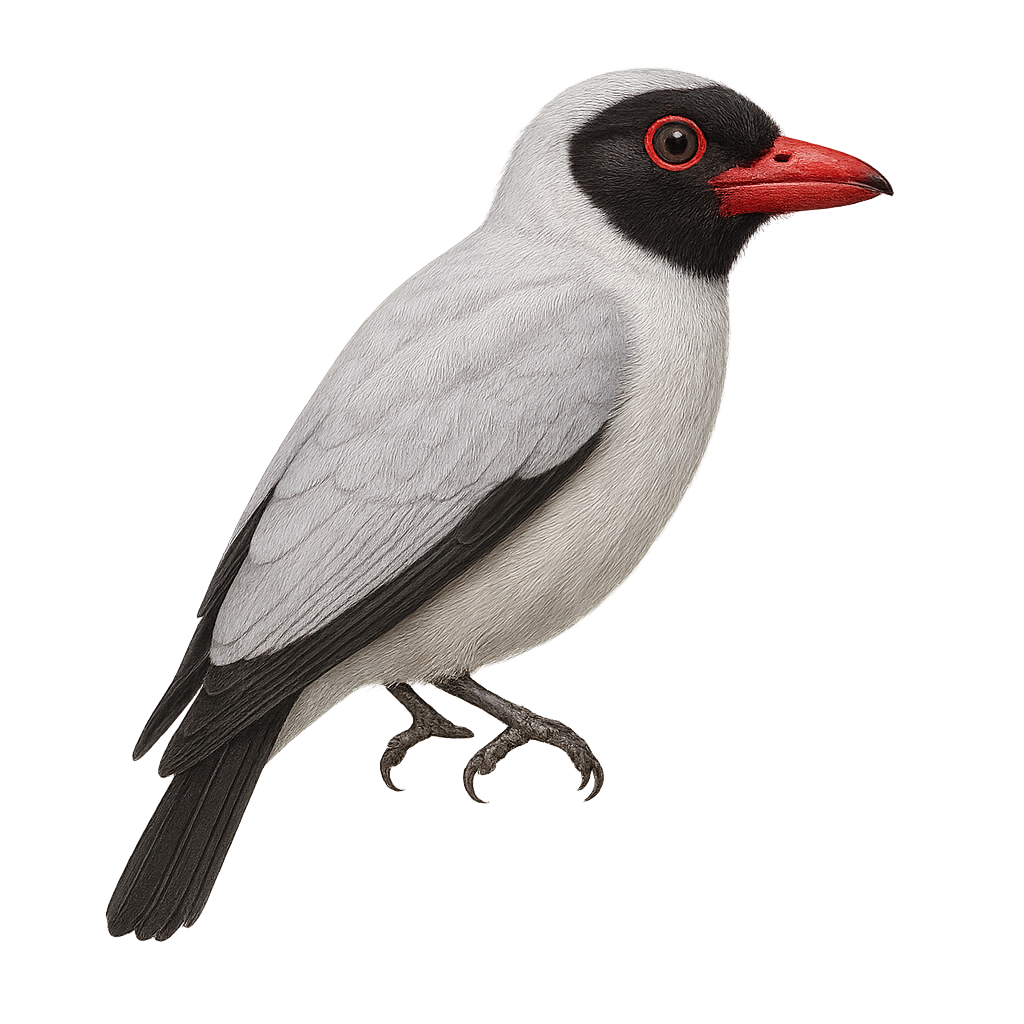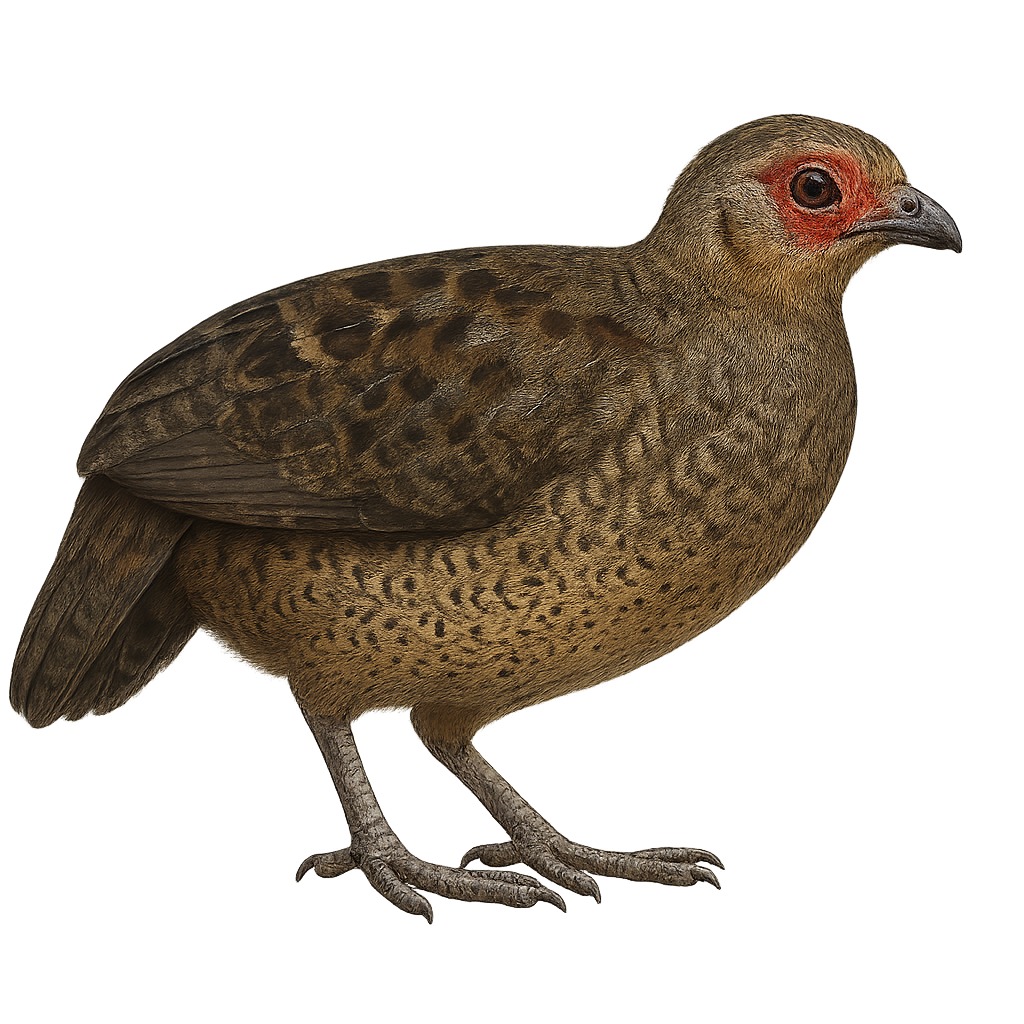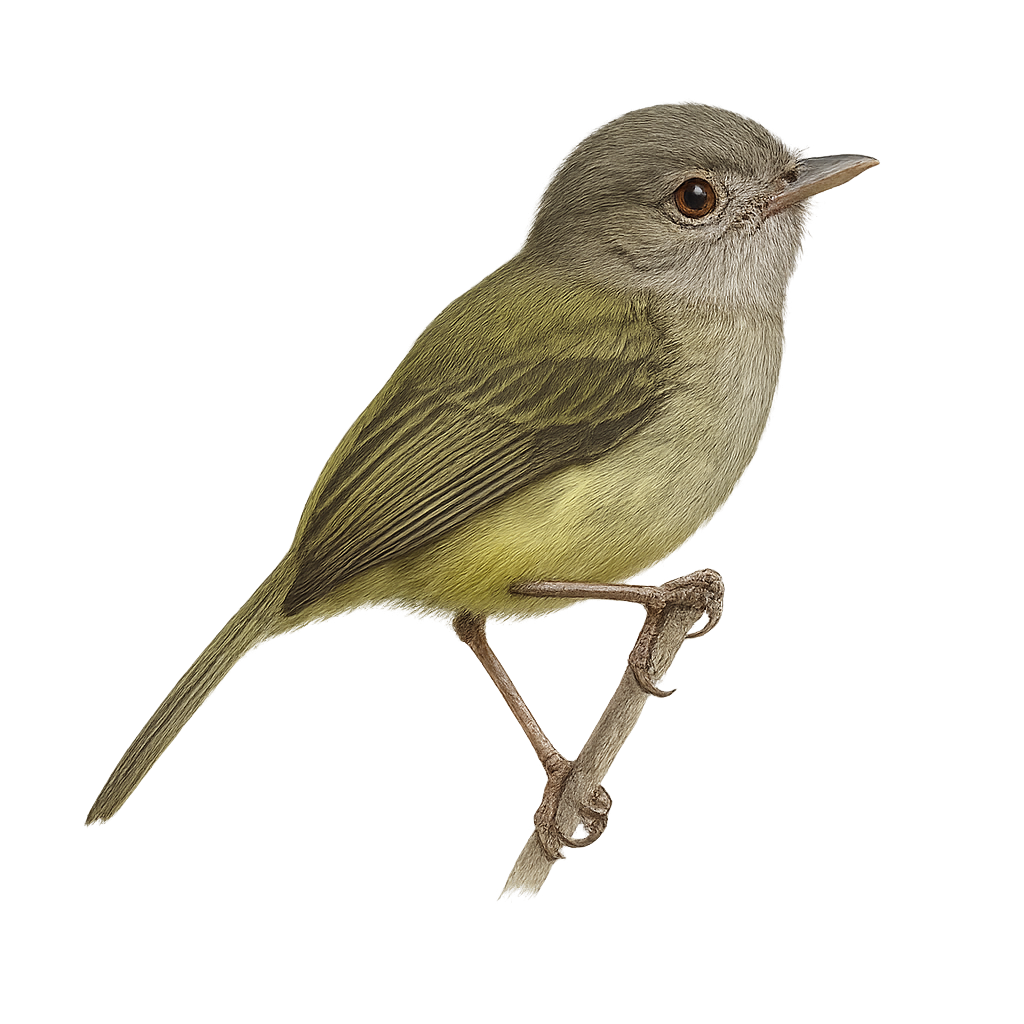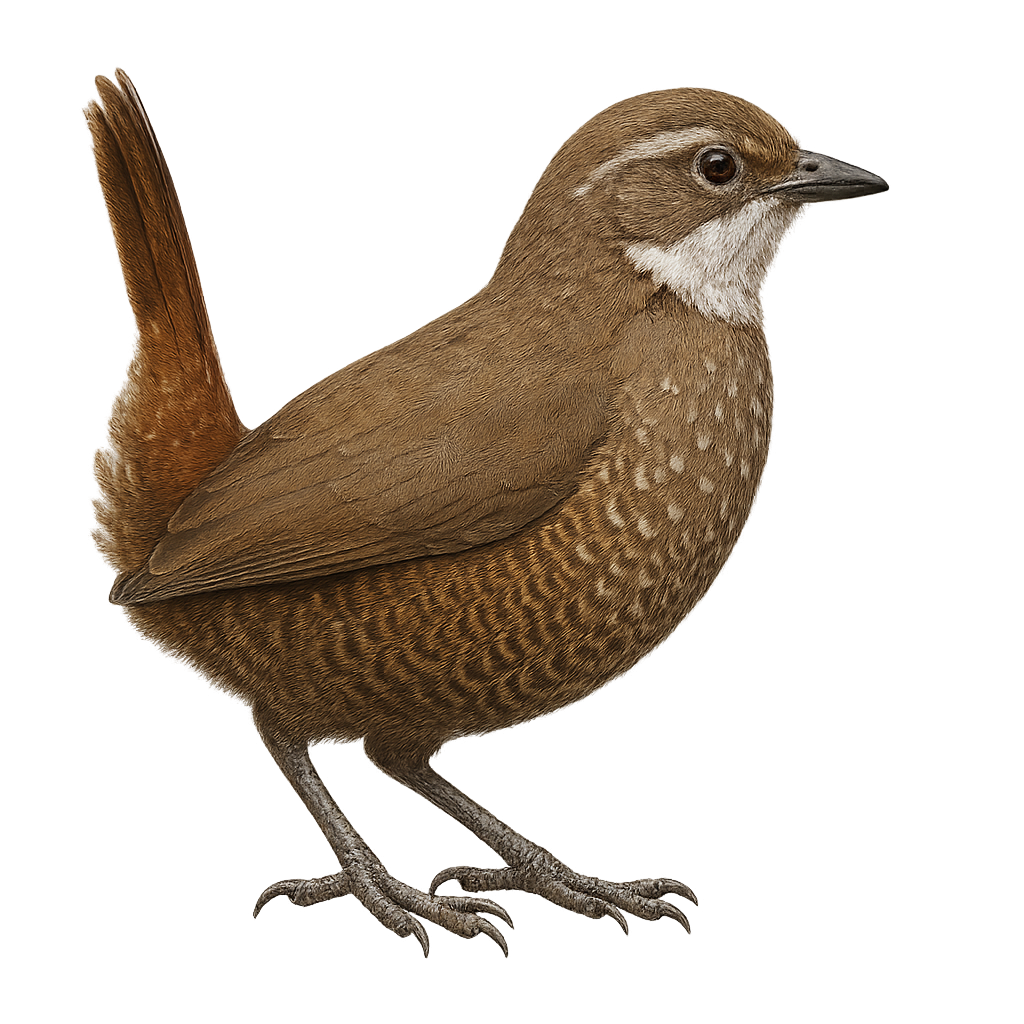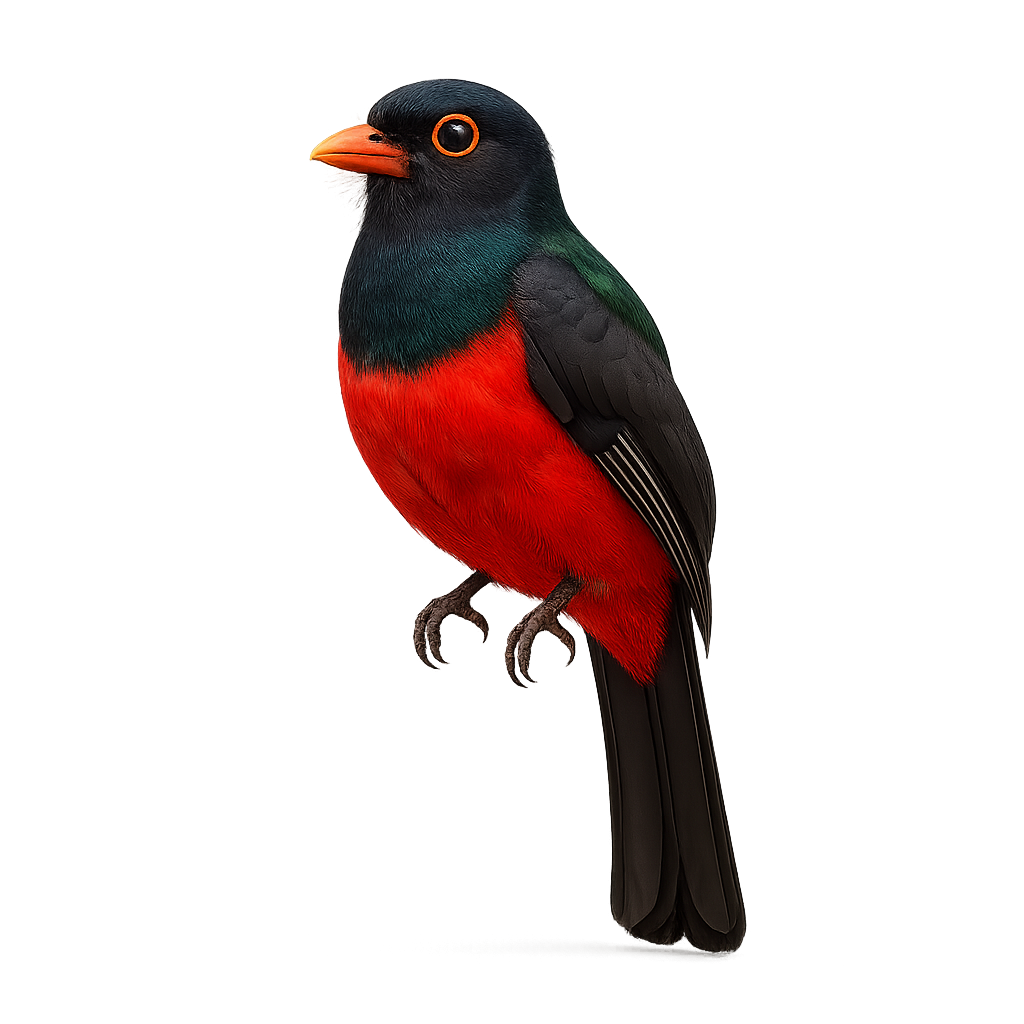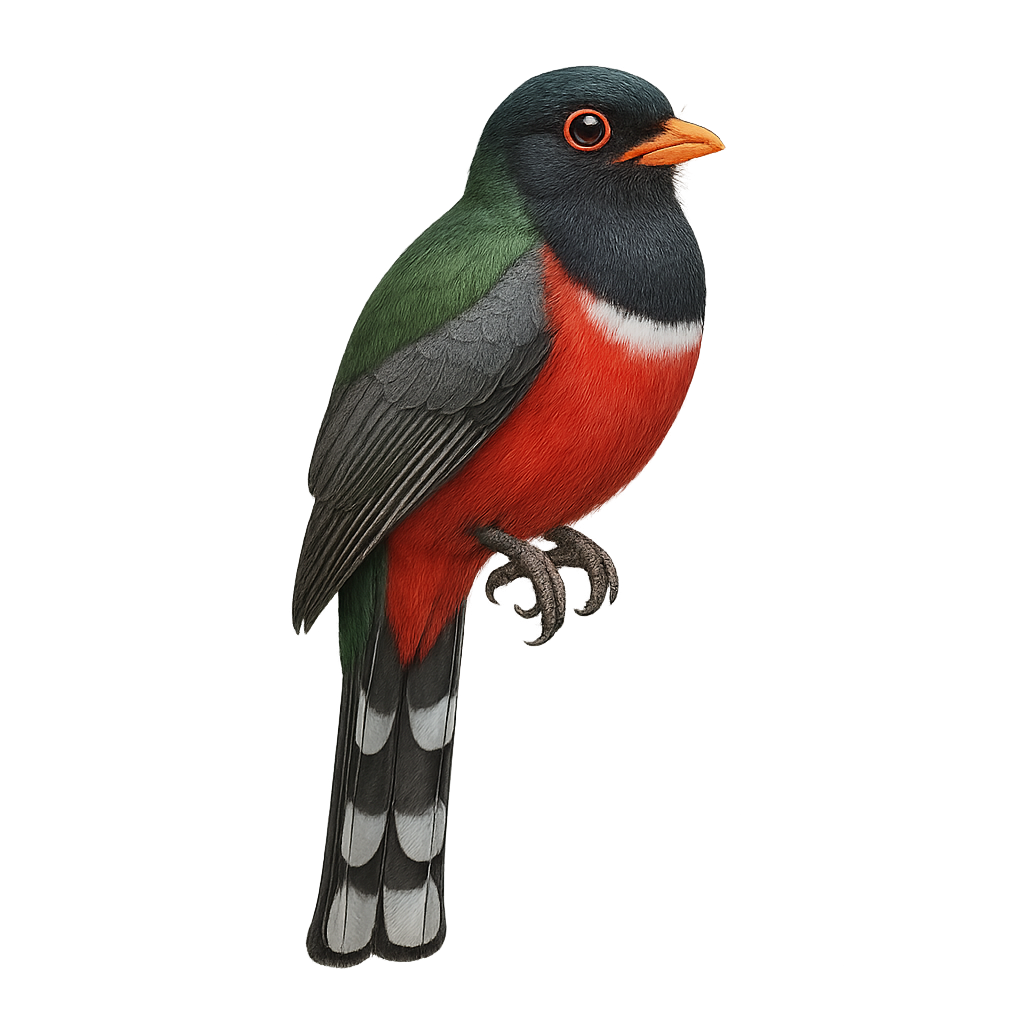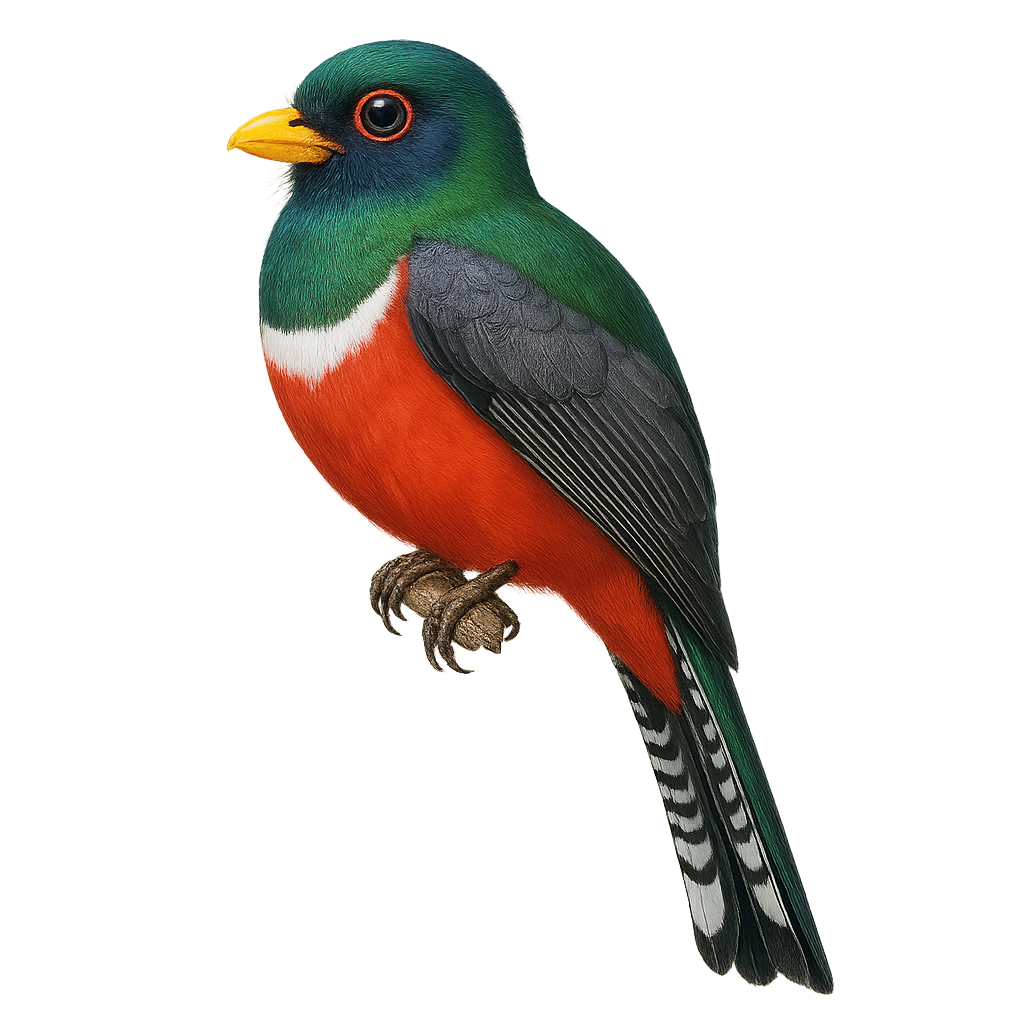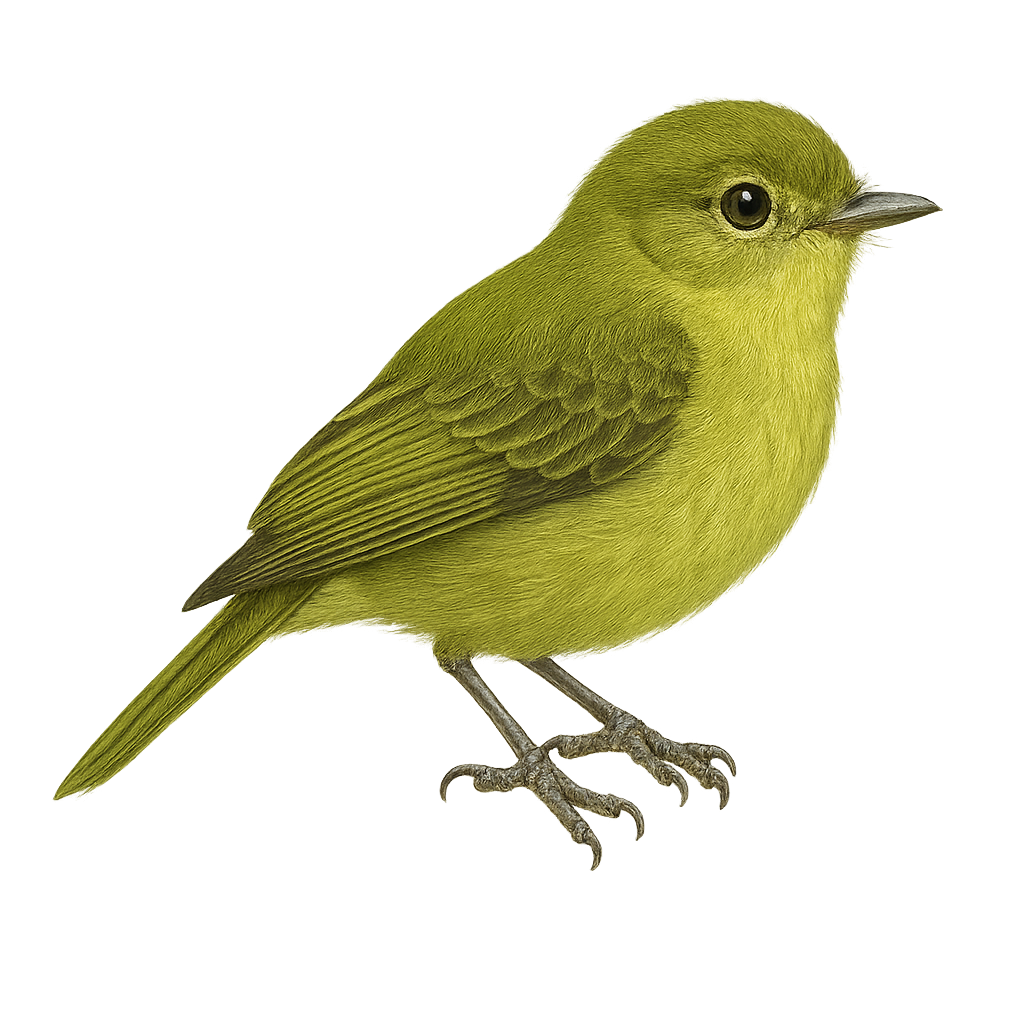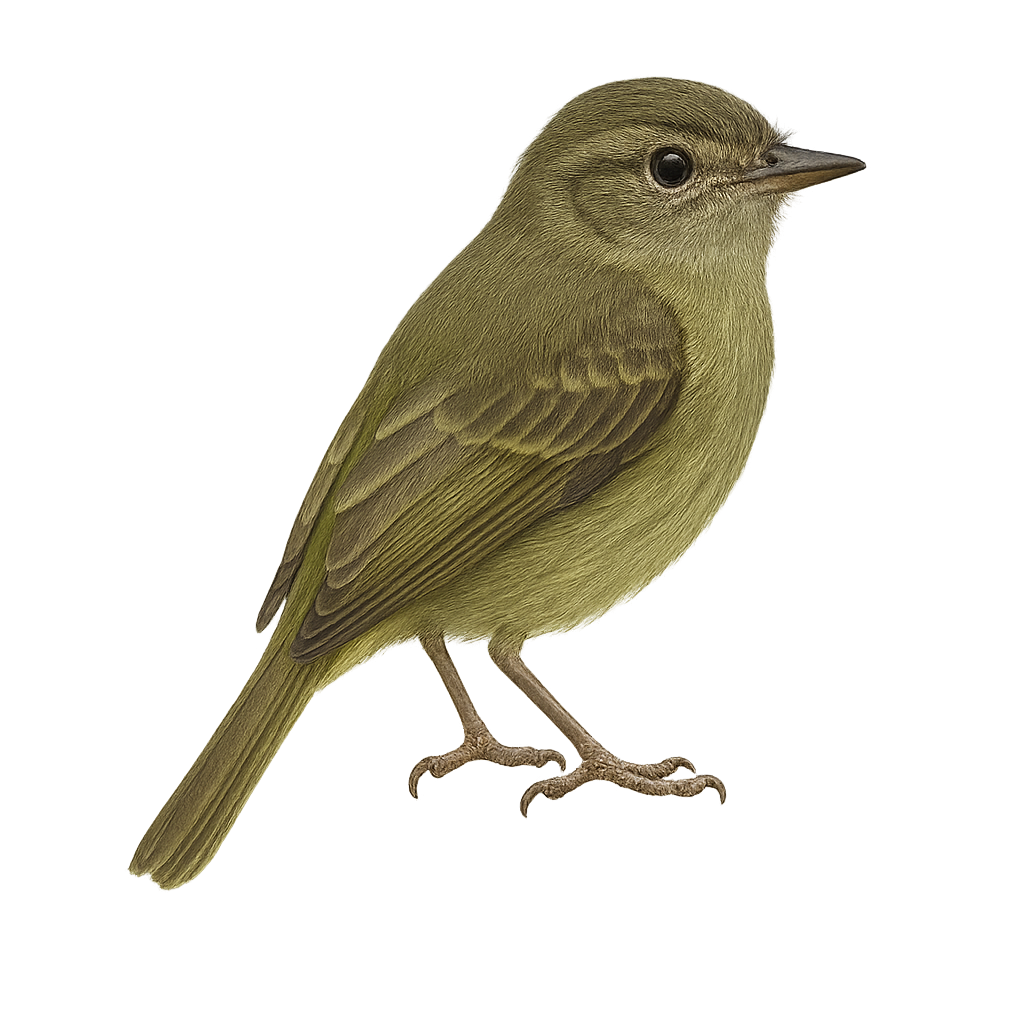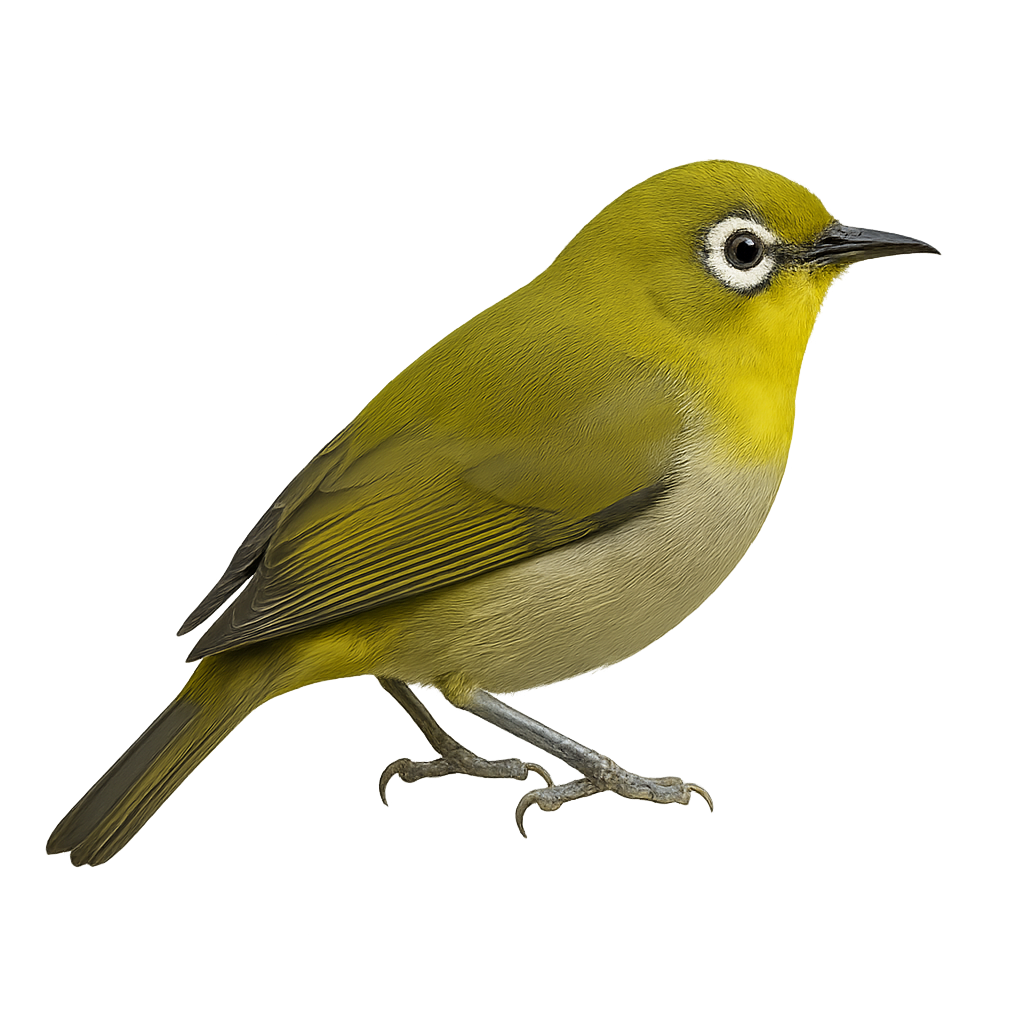The Masked Saltator, or Saltator cinctus, is a medium-sized bird belonging to the Thraupidae family. It is primarily found in the humid forests and wooded areas of the Andes, where it is recognized by its olive-green plumage and lighter belly. Its head features a distinctive black mask that contrasts with its white throat. This bird is often seen in small groups or pairs, feeding on fruits, seeds, and insects. Although relatively discreet, its melodious and powerful song can be heard throughout the canopy. The Masked Saltator plays a crucial role in seed dispersal, aiding in forest regeneration.
The Many-colored Chaco Finch is a captivating bird native to the dry and semi-arid regions of South America. It is easily recognizable by its vibrant and multicolored plumage, which gives it a unique appearance among passerines. This bird measures about 18 cm in length and features a combination of colors ranging from bright yellow to deep black, with touches of white and gray. It is often seen in small groups, feeding primarily on seeds and insects. The Many-colored Chaco Finch is a resilient bird, capable of adapting to various habitats, although it prefers bushy areas and open savannas. Its ability to blend into its environment while displaying striking plumage makes it a favorite subject for ornithologists and wildlife photographers.
The Mainland Serow, Capricornis milneedwardsii, is a robust caprine found in the mountainous forests of Southeast Asia. It is characterized by its thick, dark coat, often black or dark brown, and its short, slightly curved horns. Adapted to rugged terrains, it is an excellent climber. Serows are generally solitary or live in small family groups. Their diet mainly consists of leaves, shoots, and grasses. Although elusive, the serow plays a crucial role in its ecosystem by aiding in seed dispersal. Unfortunately, it is threatened by hunting and habitat loss.
The Lampropeltis triangulum, commonly known as the milk snake, is a non-venomous snake from the Colubridae family. It is famous for its colorful patterns that mimic those of venomous coral snakes, a classic example of Batesian mimicry. This snake is generally medium-sized, measuring between 60 and 120 cm in length. Its coloration varies depending on the subspecies, but it often features red, black, and white or yellow bands. It inhabits a variety of environments, from forests to grasslands, and primarily feeds on small mammals, birds, and other reptiles. Nocturnal by nature, it is mostly active at night and rests during the day.
The Alouatta palliata, commonly known as the mantled howler, is an arboreal primate primarily found in the tropical forests of Central and South America. Recognizable by its powerful howl that can be heard for miles, it plays a crucial role in seed dispersal, aiding forest regeneration. This monkey has a black coat with a distinctive golden mane. It lives in hierarchical social groups composed of several males and females. Howler monkeys are primarily herbivorous, feeding on leaves, fruits, and flowers. Their vocal behavior is essential for intra-group communication and territorial defense. Although their population is stable, deforestation poses a threat to their natural habitat.
The Callicebus personatus, commonly known as the masked titi monkey, is a medium-sized primate native to the tropical forests of southeastern Brazil. It is characterized by its dark face surrounded by dense, silky brownish fur. These monkeys live in small family groups and are known for their strong social bonds, often seen grooming each other. They primarily feed on fruits, but their diet also includes leaves and insects. Their natural habitat is threatened by deforestation, leading to a decline in their population. Despite this, they sometimes adapt to fragmented forest areas.
The Micronesian Starling, or Aplonis pelzelni, is a bird endemic to the Micronesian islands. This medium-sized passerine features a glossy black plumage with metallic sheens, making it particularly attractive to observe. It is often seen in small groups, feeding mainly on fruits, insects, and nectar. Its song is melodious and varied, contributing to the soundscape of the tropical forests it inhabits. Although relatively tolerant of human presence, its population is threatened by deforestation and the introduction of invasive species. Conservation efforts are crucial to preserving this unique bird and its natural habitat.
The Micronesian Starling, scientifically known as Aplonis opaca, is a medium-sized bird in the Sturnidae family. It is predominantly found in the islands of Micronesia, inhabiting diverse environments from dense forests to urban areas. This passerine is notable for its glossy black plumage with metallic sheen and bright yellow eyes. It is omnivorous, feeding on fruits, insects, and occasionally small vertebrates. Its song is varied and melodious, often heard at dawn and dusk. Although generally sociable, it can become territorial during the breeding season.
The Meerkat is a small carnivorous mammal primarily found in the dry and desert regions of southern Africa, notably in South Africa, Botswana, and Namibia. It typically measures about 25 to 35 cm in length, with a tail of 20 to 25 cm, and weighs between 0.6 and 1 kg. Its fur is gray-brown, with lighter spots on the belly, and it has a small head and large black eyes. The Meerkat is especially known for its characteristic posture, standing on its hind legs to survey its surroundings. It lives in organized social groups, called "clans," and primarily feeds on insects, small reptiles, and fruits. While its population remains relatively stable, the Meerkat is threatened by habitat loss and human disturbances.
The McConnell's Spinetail is a small bird from the Furnariidae family, primarily found in the humid forests and wooded areas of South America, particularly in Venezuela, Guyana, and Brazil. It is characterized by its reddish-brown plumage and long, tapered tail. This bird is often seen in pairs or small groups, actively moving through foliage in search of insects and other small invertebrates. Although discreet, its high-pitched, repetitive song often betrays its presence. The McConnell's Spinetail is a resilient bird, capable of adapting to various habitats, yet it remains sensitive to deforestation and the loss of its natural habitat.
The Milky Stork, Mycteria cinerea, is a large wading bird found in the wetlands of Southeast Asia, particularly in Indonesia and Malaysia. It is characterized by its striking white plumage, long red legs, and yellow bill. This bird is often seen foraging in shallow waters, feeding mainly on fish, crustaceans, and aquatic insects. Unfortunately, the Milky Stork is classified as vulnerable due to habitat loss and hunting. Conservation efforts are crucial to ensure its long-term survival.
The Mediterranean House Gecko, Hemidactylus turcicus, is a small nocturnal gecko commonly found in Mediterranean regions. It typically measures between 7 and 15 cm, including the tail. Its skin is translucent and granular, often beige to light brown with darker patterns. The toes have adhesive pads, allowing it to climb vertical surfaces easily. It primarily feeds on insects and other small invertebrates. This gecko is often seen near human dwellings, taking advantage of artificial lights to hunt attracted insects. Although discreet, it is relatively tolerant of human presence.
The Masked Tityra, or Tityra semifasciata, is a medium-sized bird belonging to the Tityridae family. It is characterized by its predominantly white plumage with black wings and tail, and a bright red patch around the eyes. This bird is often found in the tropical and subtropical forests of Central and South America, where it primarily feeds on fruits and insects. The Masked Tityra is a social bird, often seen in small groups or pairs. Its song is a mix of whistles and chirps, adding to the natural soundscape of its habitat. Although relatively common, preserving its habitat is crucial for its survival.
The Marbled Wood-Quail, or Odontophorus gujanensis, is a terrestrial bird primarily inhabiting the dense tropical forests of South America. It is recognizable by its marbled brown plumage, which provides excellent camouflage. This medium-sized bird measures about 25 to 30 cm in length and weighs between 300 and 400 grams. It is mainly terrestrial, often moving in small groups in search of food, which consists mainly of seeds, fruits, and insects. Its ability to remain still and silent makes it difficult to spot in its natural habitat. The Marbled Wood-Quail is also known for its loud and melodious calls, often heard at dusk.
The Miranda's Tyrannulet, or Hemitriccus mirandae, is a small passerine bird belonging to the Tyrannidae family. Endemic to Brazil, it primarily inhabits lowland humid forests. This small bird measures about 10 cm in length and is distinguished by its olive-green plumage, brown wings, and lighter belly. It is often seen foraging for food, mainly insects, in dense undergrowth. Although discreet, its high-pitched and repetitive song can be heard from a distance. The Miranda's Tyrannulet is a poorly studied species, making its behavior and biology largely unknown. However, it is considered vulnerable due to increasing deforestation in its natural habitat.
The Moustached Turca, or Pteroptochos megapodius, is a terrestrial bird endemic to Chile, primarily found in dense forests and shrublands of the central region. This bird is recognizable by its reddish-brown plumage and relatively large size for a member of the Rhinocryptidae family. It has a sturdy beak and strong legs, adapted to its ground-dwelling lifestyle. The Moustached Turca is a discreet bird, often heard before seen, thanks to its distinctive and melodious song. It primarily feeds on insects and small invertebrates found by foraging on the ground. Although its habitat is threatened by deforestation, it is currently classified as "least concern" by the IUCN.
The Mourning Dove, Zenaida macroura, is an elegant and graceful bird, easily recognizable by its light brown plumage and black spots on the wings. It features a long, tapered tail and dark eyes surrounded by a pale ring. This bird is widespread across North America, inhabiting various environments from urban areas to open countryside. The Mourning Dove is known for its melancholic song, a soft cooing often heard at dawn and dusk. It primarily feeds on seeds, which it pecks from the ground. Although often seen in pairs or small groups, it can form large flocks during migrations.
The marbled newt, Triturus marmoratus, is a medium-sized amphibian, typically measuring between 12 and 15 cm in length. Its skin features a distinctive marbled green and black pattern, providing excellent camouflage in its natural habitat. Males display a striking dorsal crest during the breeding season. This newt is primarily found in humid forests, meadows, and wooded areas of Western Europe, particularly in France and Spain. It is nocturnal, hiding under stones or leaves during the day. Reproduction occurs in ponds or temporary pools. Although its conservation status is concerning, it remains relatively common in some areas.
The Massena's Trogon is a colorful bird found primarily in the humid tropical forests and wooded areas of Central America, particularly in Costa Rica, Panama, and Nicaragua. It typically measures about 26 to 30 cm in length and weighs between 90 and 120 g. Its plumage is vibrantly colored, with a green and red body, a yellow chest, and a black head, giving it a distinct appearance. The Massena's Trogon primarily feeds on fruits, berries, and small insects that it finds in the trees. It is often observed perched on branches, where it moves calmly and discreetly. While its population remains stable in some areas, it is sometimes threatened by deforestation and the loss of its natural habitat.
The Masked Trogon is a fascinating bird primarily inhabiting the tropical forests of South America. It is easily recognizable by its colorful plumage, featuring a bright green back, red chest, and white belly. Its head is adorned with a distinctive black mask, giving it its name. This bird prefers dense habitats where it can blend in with the foliage. It feeds mainly on insects and fruits, which it captures with agility thanks to its swift and precise flight. The Masked Trogon is often seen in pairs or small groups, and its melodious song resonates through the canopy.
The Mountain Trogon, or Trogon mexicanus, is a colorful and fascinating bird found in the mountainous forests of Central America. It is distinguished by its vibrant plumage, featuring a metallic green head and back, bright red belly, and a black and white tail. Measuring about 30 cm in length, it is often seen perched silently in trees, feeding mainly on insects and fruits. This bird is known for its soft, melodious song, often heard before it is seen. It prefers humid forests and wooded highland areas, where it can blend into the dense foliage. Although relatively tolerant of human presence, it remains discreet and can be difficult to spot.
The Phylloscartes roquettei, known as the Minas Gerais Tyrannulet, is a small bird endemic to Brazil, primarily found in the dry forests and savannas of the Minas Gerais state. It is characterized by its olive-green plumage and slightly darker wings. This discreet bird is often difficult to spot due to its small size and elusive behavior. It primarily feeds on insects, which it catches in flight or on leaves. The Minas Gerais Tyrannulet is an endangered species, mainly due to deforestation and habitat loss. Conserving its habitats is crucial for its long-term survival.
The Zimmerius improbus, known as the Mistletoe Tyrannulet, is a small passerine bird belonging to the Tyrannidae family. It is primarily found in tropical and subtropical moist lowland forests, often near water. This small bird is distinguished by its olive-green plumage and lighter belly, allowing it to blend into its surroundings. It is known for its melodious song and varied vocalizations, often heard before being seen. The Mistletoe Tyrannulet is an active bird, spending most of the day foraging for insects and fruits in the canopy. Although its habitat is threatened by deforestation, it is currently classified as Least Concern by the IUCN.
The mountain zebra (Equus zebra) is a sturdy equid standing 1.2–1.4 m at the shoulder and weighing 200–350 kg, characterized by bold black and white stripes that broaden across the torso and narrow on the legs, with a pale rump patch. Endemic to southern Africa’s mountainous regions, it inhabits montane grasslands, rocky steppes and steep slopes, grazing on short grasses and low shrubs. It is social, forming family herds of a stallion, several mares and their offspring, which the stallion defends. Breeding occurs year-round, with births peaking from November to April, aligning with the rainy season to maximize foal survival.
The Montane White-eye, or Zosterops poliogastrus, is a small bird with predominantly olive-green plumage and a distinctive grey belly. It is characterized by a white eye-ring, giving it a lively and curious look. This bird is often seen in active flocks, moving swiftly through foliage in search of fruits, nectar, and insects. It is mainly found in the mountainous regions of East Africa, inhabiting humid forests and wooded areas. Although it is a sociable bird, it can be wary of intruders. Its ability to adapt to different habitats and its gregarious behavior make it an interesting subject for ornithologists.


